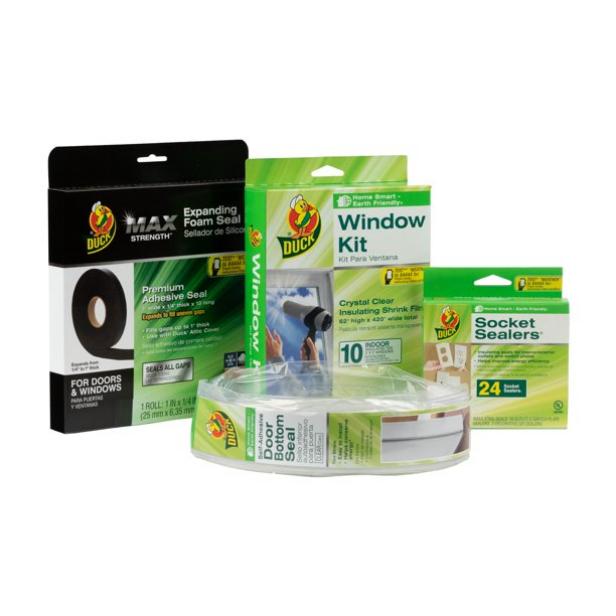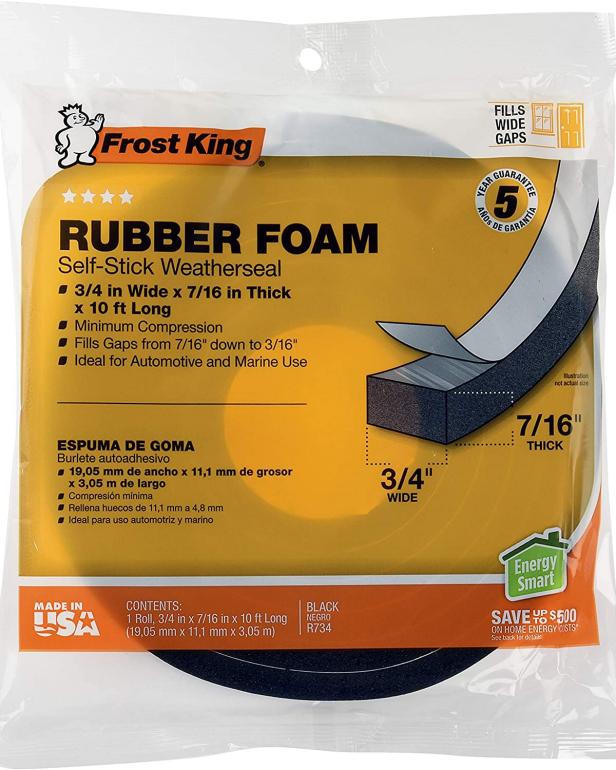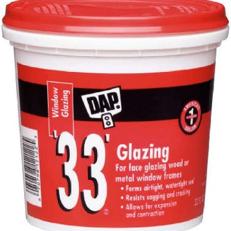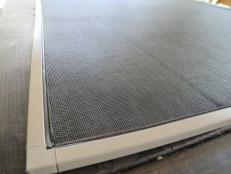8 Ways to Fix Drafty Windows
Save money and stay warm this winter with these DIY ways to insulate and weather-strip windows as well as doors.

When outdoor temperatures plummet, it’s not uncommon to notice cold air drafts in unexpected areas. You may find that your home feels cooler than usual despite having the heat up or detect bursts of air around door frames and windows when the wind gusts. Fortunately, if you catch these drafts early, you can take steps to improve your window insulation, save energy and keep your family comfortable all winter long.

Getty Images
The US Department of Energy educates homeowners about energy-saving opportunities. As the experts, they help explain why windows, doors and skylights offer the most opportunity for heat loss. Drafts can be caused by heat transfer through the glass, glazing or framing; thermal radiation from room-temperature objects, such as exterior walls and windows; or air leakage due to a difference in pressure indoors and out.
“Improving the thermal resistance of the [window] can contribute to a window's overall energy efficiency, particularly its heat loss rate or U-factor,” says the US Department of Energy. “U-factor is the rate at which a window, door or skylight transmits nonsolar heat flow. The lower the U-factor, the more energy-efficient the window, door or skylight.”
There are a variety of winter window insulators available in stores to meet your needs, as well as DIY solutions that can also stop drafts and save energy.
As you’re considering your fix, audit your windows, surrounding trim and window seals so you can narrow down what type of solution will offer the best cure on a cold day.
Window Insulation Film
Large windows can always benefit from an extra layer of protection against the elements. Vinyl window insulator kits can be used on any size window and can improve efficiency for both single-pane and double-pane windows. Though these store-bought kits can only be used once and are discarded when the weather improves, they work well while being transparent and minimally disruptive to the look of your home. They offer nearly no interruption to line of sight or natural daylight.
Many homeowners and renters like window insulation kits because they’re easy to find and affordable. The vinyl window insulation film sheets are sold in large sizes but can also be trimmed to fit smaller windows. They’re also available in multipacks, so it’s convenient to seal many windows with a single kit. The insulating shrink film affixes to the window trim with adhesive strips and is sealed in place with a hot hairdryer for a wrinkle-free finish.
Self-Stick Vinyl V-Channel Weather Stripping
V-shaped weather stripping (aka tension seal) is a folded strip of foam insulation (thus the V-shape) covered in vinyl. When pressed together by a door or window, the two sides of the V-channel compress together to create a seal. It works well in very narrow cracks and gaps, and, as a bonus, it is moisture resistant. Use it on single- and double-hung windows, casement windows and around doors.
To install V-channel weather stripping, start by wiping the inside of the window jamb all the way around with a damp rag. Let dry. Cut four strips of the V-channel an inch longer than the height of the lower sash. Raise the lower sash. Apply a strip inside the jamb, leaving the backing on the top inch. Feed that extra inch up under the side of the sash. Repeat for the other side. Close the window, remove the extra backing and press the strips in place. Repeat for the upper sash but feed the extra inch of V-channel down.
Bubble Wrap
Similar in concept to vinyl insulation film, you can improve the U-factor of your windows by covering them with sheets of bubble wrap. The layers of plastic hold thermal radiation and act as an extra layer of glass. Though its bubbly construction obscures the line of sight out a window, it still allows natural daylight to flow into a home during the cold months. Also, unlike insulation film, bubble wrap can be reused year after year.
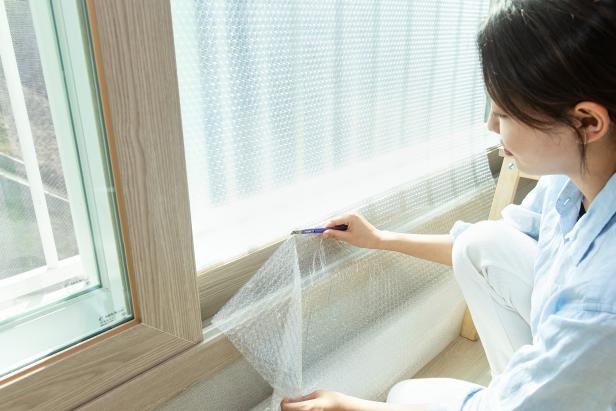
Getty Images
Cushioned Bubble Wrap makes a great insulator.
Weather-Sealing Foam Tape
Rolls of weather-sealing foam come in handy if you need to fill gaps in a closed window. The compressible, high-density foam can be purchased in a variety of thicknesses to accommodate medium and large gaps between 7/16-inch down to 1/8-inch. Backed with adhesive, the foam is easy to install and remains securely in position.
In many applications, the foam tape can be left installed year-round to provide added insulation during the summer months. It may eventually show signs of deterioration, but it is an affordable product that can help seal a window for many years.
Caulk
A bead of caulk can be used to insulate a window anywhere that the window meets the trim work. If you notice drafts around the perimeter of your window or where the trim meets the drywall, use an exterior-grade caulk to seal openings and eliminate gaps.

Getty Images
Window-Glazing Compound
Older windows with single-pane glass need to be reglazed as part of their regular maintenance. If you have single-pane windows in your home and can feel drafts between the glass and the trim, or notice that the glass panes rattle loosely when tapped, take efforts to make repairs.
If you’re noticing that repairs are necessary in the middle of winter, cut yourself some slack, put up a temporary plastic window seal, and add glazing to your to-do list for springtime. It’s easiest to apply the glazing compound at above-freezing temperatures, and often, it’s also easier to remove the glass for maintenance. With a little patience, this is a DIY chore that you can learn to do on your own.
Shop Window Sealing Products
Draft Stoppers
When drafts are isolated to the bottom of the window, many homeowners skip the weather-sealing foam strips and opt for draft stoppers. The best store-bought options are sold for both windows and doors. They are double-sided insulators and are constructed using two foam cylinders that fit parallel in a fabric sleeve. The foam cylinders can be cut to fit the width of your window and be positioned on the inside and outside of the window rail to serve as a double barrier preventing drafts.
Considering the simplicity of the design, it’s no surprise that DIY solutions are also abundant. To improve the insulation along the bottom of a window, you can fill a narrow tube of fabric with rice and reuse it year after year as a weatherproofing barrier.
Thermal Window Coverings
In addition to all the store-bought solutions available for insulating windows, don’t lose sight of the fact that your everyday window coverings also improve the energy efficiency of your home during the winter. Fabric window treatments such as thermal curtains and honeycomb blinds can be used year-round to reduce drafts and stabilize your environment.
Though high-quality window coverings come with an investment, you can expect them to last for years.
Shop Thermal Window Treatments
Can You Fix a Broken Window Seal?
Find out if you should DIY or call a pro when your thermopane window has moisture in between the panes of glass.






